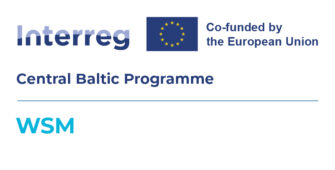Why?
Challenge: low level of water safety awareness in both partner countries among youngsters.
Estonia: the rising level of death from drowning, emergency situations on/near water sources (according to the statistics provided by Estonian Rescue Department 42 people drowned in 2024, which is already a higher number than the previous year. The most emergency cases happen in our operations region, which is Harjumaa, due to its population density, seaside and strategic location (capital city and surroundings). Thus it’s been considered a high risk area by the Estonian Police and Border Guards.
Situation in Latvia is similar. Jurmala is a high risk region being located on the coast and being one of the most popular sea sides in Latvia. 316 drowning cases are registered in Latvia between 2020 and 2022. Statistics shows that on average, a drowned body is removed from the water every three days: 122 people in 2020, 100 in 2021, and 94 in 2022.
At the same time, there is a lack of preventive education on the topic of water safety provided by local services. Moreover, the classes cover only some theoretical parts and lack practical skills. Some marine rescue units also provide some short classes for children, but there is no quality control or structure so everyone does what they can. The situation in Latvia is even more alarming: there is no special programme dedicated to reduce drowning or educate youngsters on water safety topics.
How?
To change the situation for the best, we’ve decided to create a preventive methodology on water safety.
For this project we’ve chosen 14-18 y.o. youngsters as the target group of the project’s product – the methodology on water safety, as it’s the main risk group. In that age young people used to challenge the rules, take unproven risks and often put themselves/their peers in danger (considering also consumption of alcohol and other sedatives). At the same time this age group is eager for new challenges, knowledge and skills that if delivered in a considerate manner can lead to a shift in destructive behaviors and becoming a role model for their peers.
Considering that the educational methodology we’re about to develop would include both prevention of emergency cases and general safety guidelines together with conscious behavior on/near water, exchange of experience between both organisations and differences in water safety control structures (no volunteer life-guards in Estonia, no volunteer marine rescue units in Latvia) cross-border cooperation will be a great asset to the project.
Project transferability will be accomplished with the help of institutions and other local ogranisations that deal with water safety topics to whom the created methodology will be promoted to and who will work with us on the transferability of the results, such as Estonian Rescue Union, Estonian Rescue Department, Estonian Scout Union, other volunteer marine rescue units of Estonia, among with life-guarding organisations, swimming associations in Latvia, Jaunsardzes centrs – Young Guard center, Biedrība “Latvijas Skautu un gaidu centrālā organizācija” (LSGCO) – Latvian Scout and guide central organization, SIA “Latvijas Lauku konsultāciju un izglītības centrs”, State Fire and Rescue Service Republic of Latvia, Costs Guard service – Maritime Rescue Coordination Centre – SAR Latvia.
We see the cross-border cooperation necessary for this project as both countries face the same challenge. Both our organisations are working on changing the situation for the best based on previous practical experience, expertise in the field of water safety and education, and complex approach. Combining those forces we can reach better results than working on our own. Thus we see the creation and promotion of the common practical water safety methodology for young people as a joint cross-border opportunity to tackle the challenges described above and improvement of the water safety preventive education in both countries.
What?
As a result a new innovative solution will be developed – the complex easy-to-transfer water safety methodology that will contain:
- both theoretical and practical elements (the existing programs cover only the theoretical parts)
- awareness of the risk-preventive behaviour on/near water covering the specifics of all 4 seasons (the existing programs cover only summer season specifics)
- knowledge of effective behaviour both in emergency situations and in normal conditions (the existing programs do not provide enough info on effective behaviour in emergency situations)
- recommendations on delivery of the methodology to the end user (no recommendations are usually provided, considering that most volunteers that are lecturing now at schools come not from educational background, those guidelines are very important)
- recommendations on methodology adaptation for the needs of various groups (including fewer opportunity groups, eg. physical disabilities, cultural differences etc.)
Considering that at the moment there are no similar programs dedicated specifically for the end-user, we see our product to be innovative.



Find WSM on social media